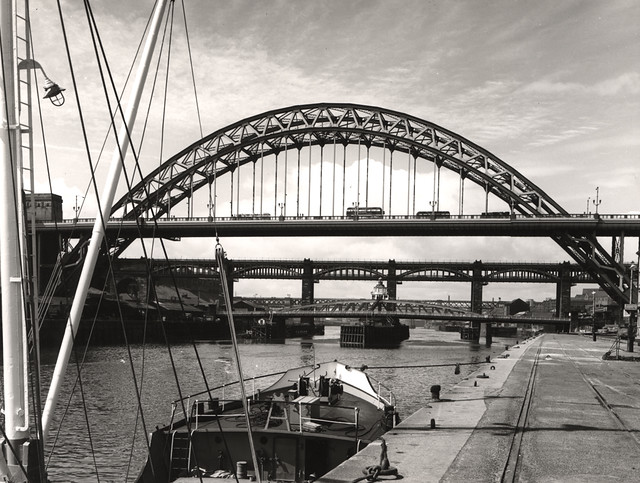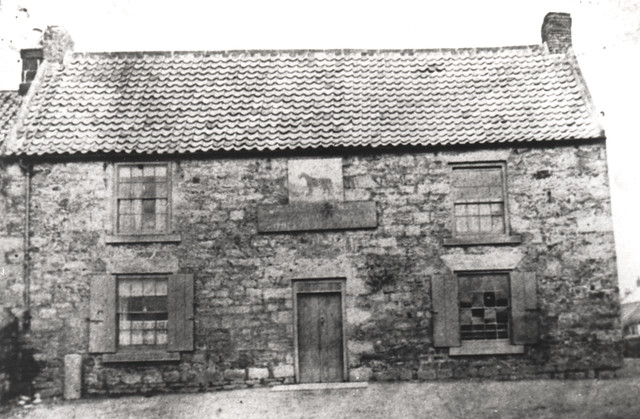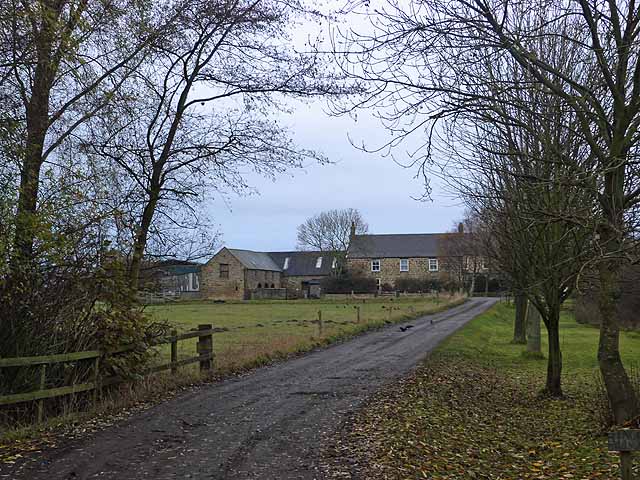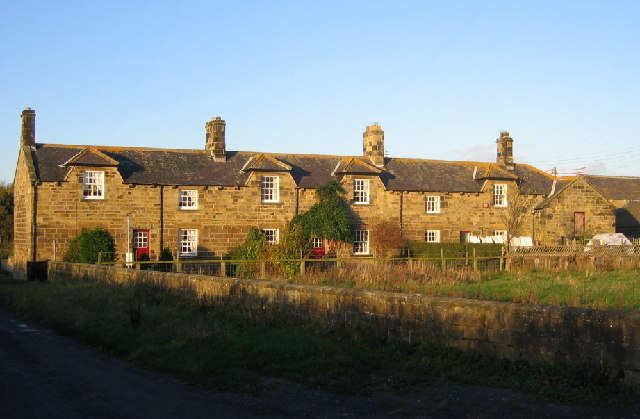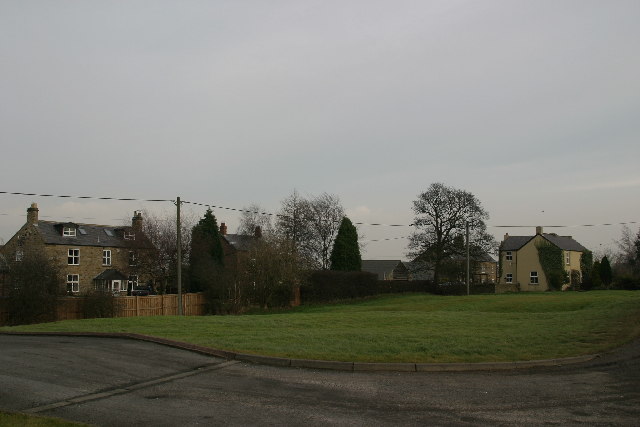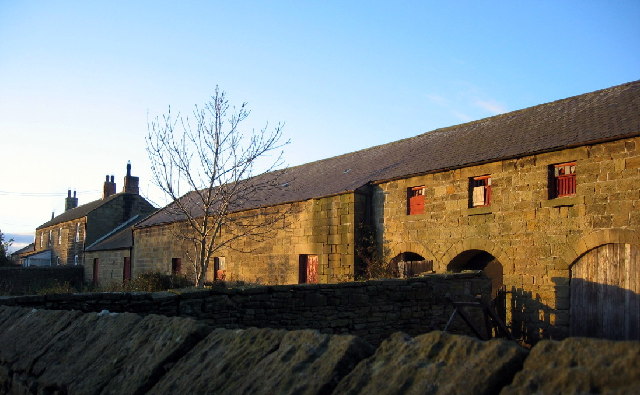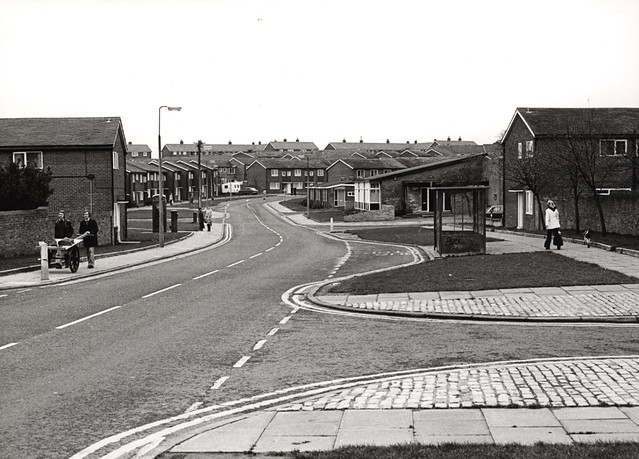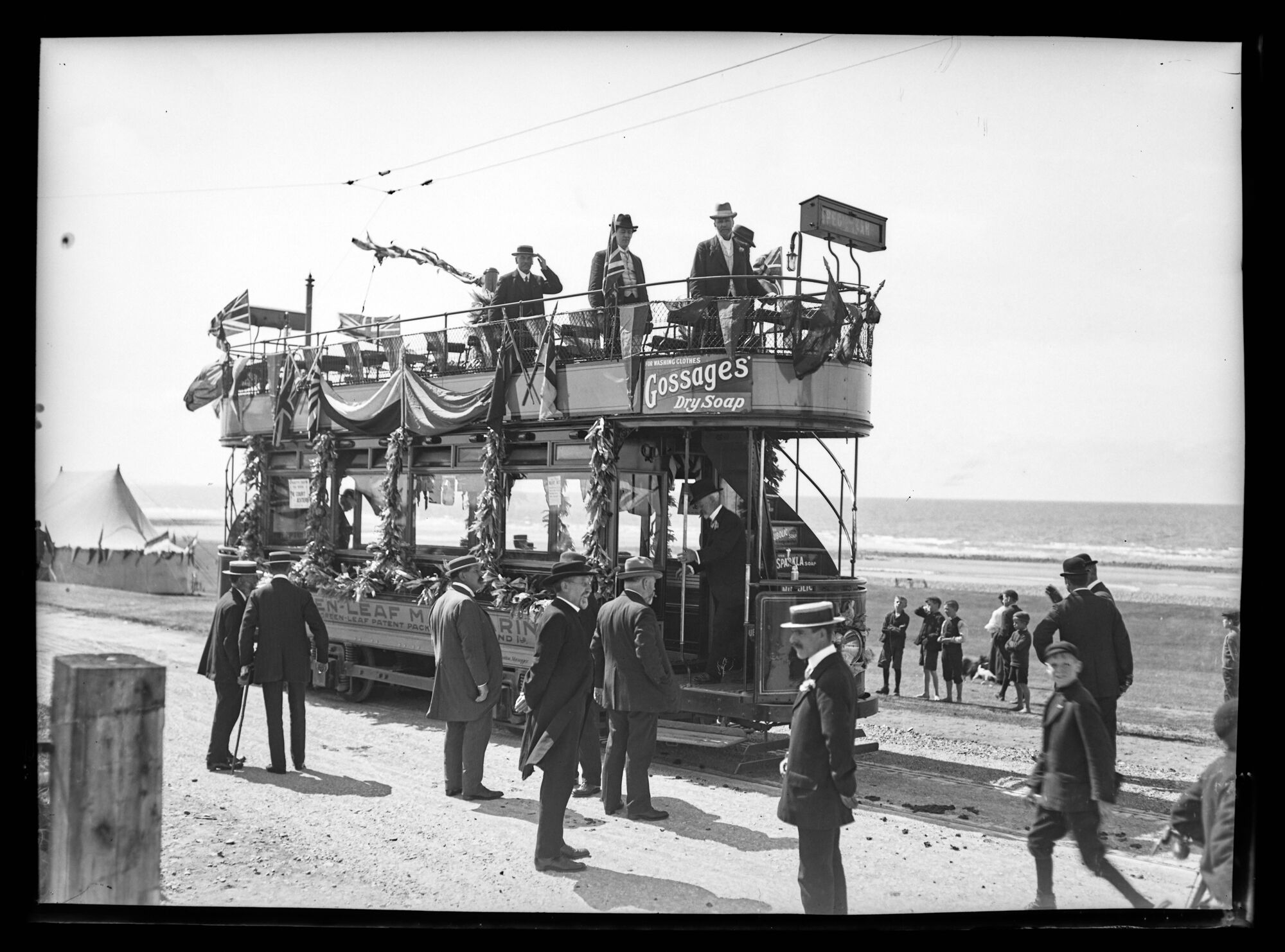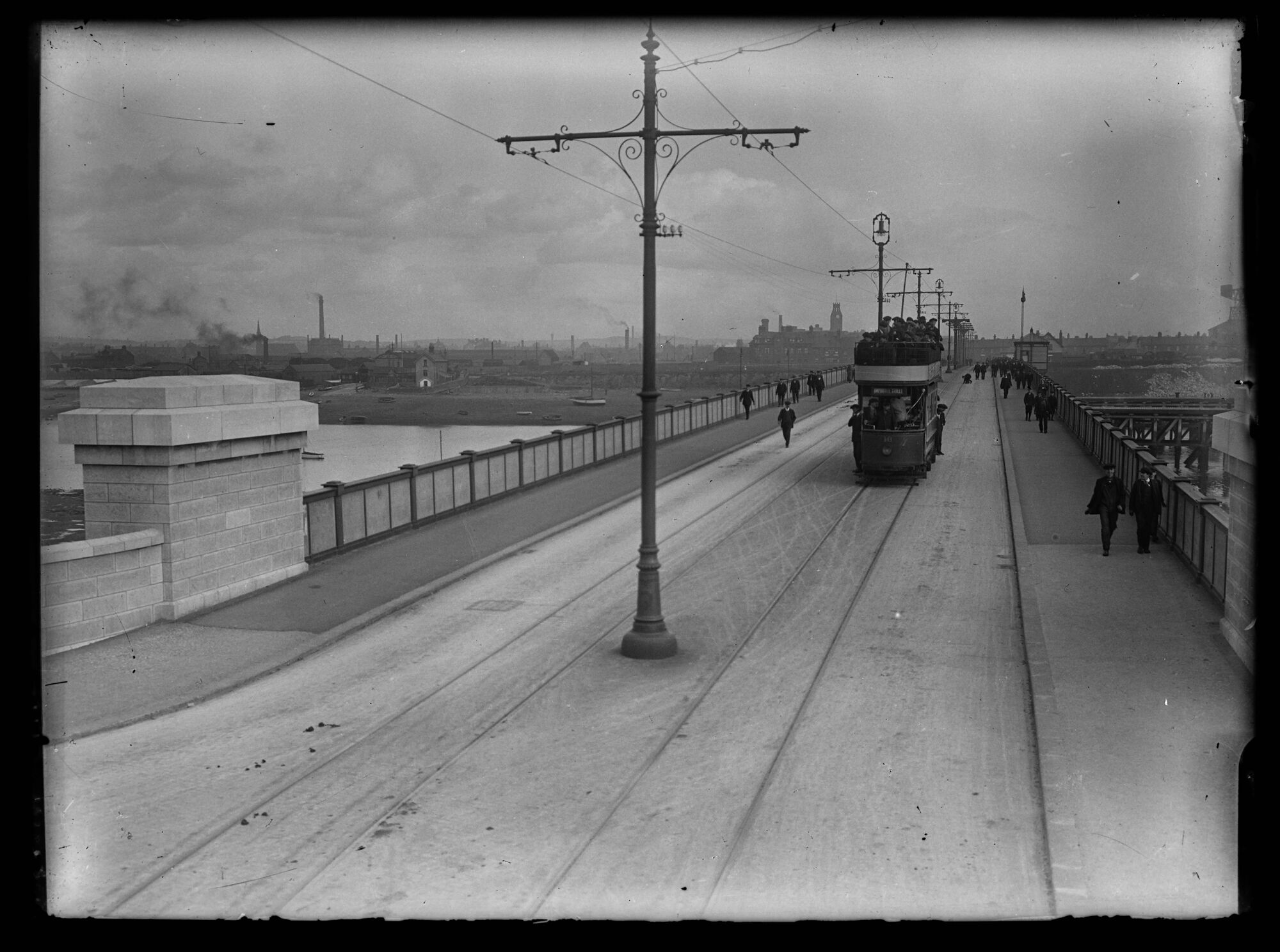Topics > Tyne and Wear > Newcastle upon Tyne > Dinnington > Dinnington Parish, 1855
Dinnington Parish, 1855
Extract from: History, Topography, and Directory of Northumberland...Whellan, William, & Co, 1855.
DINNINGTON PARISH.
DINNINGTON is a parish, comprising the townships of Brenkley, Dinnington, Horton Grange, Mason, Prestwick, and Woolsington. It comprises an area of 5,538 acres; and its population in 1801, was 560; in 1811, 577; in 1821, 626; in 1831, 819; in 1841, 730; and in 1851, 668 souls. Dinnington was formerly a part of the parish of Ponteland, but was made a distinct parish in 1835, under the act of 58 Geo. III. c. 45.
BRENKLEY is a township in this parish, seven and a half miles north by west of Newcastle. It contains 885 acres, and its population in 1801, was 49; in 1811, 39, in 1821, 37; in 1831, 42; in 1841, 56; and in 1851, 43 souls. John Bigge, Esq., and Clayton de Windt, Esq., are the landowners. This township consists of three farm houses and .a few cottages.
DIRECTORY. The farmers are James Hoy, Barbara Rowell, and Robert Rowell.
DINNINGTON is a township and village in the parish of the same name, the property of Matthew Bell, Esq., and Clayton de Windt, Esq. The township contains 812 acres, and its rateable value is £997. The number of inhabitants in 1801, was 158; in 1811, 172; in 1821, 205; in 1831, 354; in 1841, 262; and in 1851, 263 souls.
THE VILLAGE of Dinnington is situated about six and half miles north by west of Newcastle. THE CHURCH, dedicated to St. Matthew, was erected in 1834, and consecrated by the Bishop of Carlisle in October, 1835. It was endowed by Matthew Bell, Esq., and the Warden and Fellows of Merton College, Oxford. The living is a vicarage in the archdeaconry of Northumberland and deanery of Newcastle. Incumbent, the Rev. J.N. St. Clair Raymond, M.A. There are schools here for the education of children of both sexes. The Boys' School was enlarged in 1842, by Matthew Bell, Esq., and will now accommodate 100 pupils. The Girls' School was erected by Mrs. Bell, in 1842, and fourteen boys and ten girls are educated and partly clothed at her expense. John Bell and Margaret Mackenzie, teachers.
In 1820, while ploughing a field called the Back Yards, a little to the west of the village, the foundation of a building, several human bones, and some skulls, with the teeth perfect in the jaw bones, were discovered about three feet below the surfce of the earth, A number of stones and fire-bricks were found, and a regular pavement of whinstones. Two stones, which had been dressed, when joined together, formed an octagonal figure, and were evidently the remains of a Gothic pillar. These stones were supposed to be the remains of a chapel, which is traditionally asserted to have occupied the site where they were· discovered.
POST OFFICE, DINNINGTON, George John Bell, postmaster. Letters arrive here from Newcastle, at 10-30 a.m. and are despatched thereto at 4-20 p.m.
DIRECTORY:
|
Bean John, farmer, Morley-hill Bell George John, schoolmaster, assistant overseer, and parish clerk Blacklock John, superintendent constable for Castle Ward Brewis Jno. boot & shoemaker & shopkeeper Brown Edward, boot and shoemaker Elliott William, vict. Bay Horse English Benjamin, tailor Johnson John, vict. White Swan Inn Mackenzie Mary, schoolmistress McDine John, brick & tile manufacturer, Coach-lane McDowell Christopher, shopkeeper Potts Thomas, tailor Peacock John, farmer, Dinnington and Havannah Farms |
Richley John, boot and shoemaker Short John, vict. Masons' Arms Simpson George, tailor Simpson Ralph, boot and shoemaker Simpson Robert, boot and shoemaker Simpson Thomas, sen. boot and shoemaker Simpson Thomas, jun. boot and shoemaker Tate Thomas, farmer, Moory Spot Taylor John, boot and shoemaker Taylor Mr. Joseph Turner John, butcher Turner Mr. John Wardle Thomas, boot and shoemaker |
Carrier. - To Newcastle, John King, on Tuesdays and Saturdays.
HORTON GRANGE is a township and hamlet, the principal proprietors of which are Lord Decies, Sir Matthew White Ridley, Bart., Mr. Ekins, and others. The township comprises 1,222 acres, and its population in 1801, was 62; in 1811, 80; in 1821, 66; in 1831, 64; in 1841, 64; and in 1851, 75 souls. This township is divided into four farms, one of which bears the designation of Make 'm Rich. THE HAMLET of Horton Grange is situated eight and a half miles N.N.W. of Newcastle. Mr. Richard Coats, of this place, at his decease in 1719, bequeathed the whole of his effects, at or about £70 per annum, to the parish of Ponteland, for a charity school.
DIRECTORY. William Goodfellow, agent; and the farmers are Thomas Bell, Make 'm Rich; George Green, Low House; John Tone, Carr House; and Stephen Oliver, Horton Grange.
MASON is a township and hamlet, the property of Clayton de Windt, Esq. The township comprises an area of 1165 acres, and the number of its inhabitants in 1801, was 112; in 1811, 97; in 1821, 127; in 1831, 134; in 1841, 144; and in 1851, 126 souls. THE HAMLET of Mason is situated seven miles N.N.W. from Newcastle.
DIRECTORY:
|
Common Robert, Thomas, and William, cartwrights and joiners Jordan William, blacksmith Raymond J.N. St. Clair, M.A. vicar of Dinnington Watson William, stonemason Watson Matthew, boot and shoemaker |
Farmers Brewis James & Son, South East Mason Fenwick Edward and George, Mill Hill Fenwick Edward & James, North East Mason Fenwick James, Hack Hall Fenwick William, Gardner's Houses Maxwell James, South Mason Rutherford Robert, Mason Farm |
PRESTWICK is a township and hamlet the principal landowners of which are Matthew Bell, Esq., Mrs. Fenwick, and Mr. Pearse. The township con-tains 621 acres, and its rateable value is £1,360. Population in 1801, 122; in 1811, 133 · in 1821, 155; in 1831, 168; in 1841, 161; and in 1851, 148 souls. A portion of Prestwick, containing nine houses and forty-six persons in 1851, is in the parish of Ponteland the entire township is here returned. PRESTWICK CARR, an extensive marshy piece of land situated a little to the north of Prestwick, comprises about 1,100 acres, the whole of which is inundated in rainy seasons by the overflowing of the river Pont, which crosses its western extremity. Though a drain has been cut from this marsh to the river, a large lake, and several smaller bodies of water remain upon it in dry summers, but in very wet weather they form one vast sheet of water, abounding with various kinds of fish, and are much resorted to by different species of wild fowl. In summer, the sides of the Carr form a fertile and extensive pasturage, where the farmers and householders of Berwick Hill, Brenkley, Dinnington, Horton Grange, Prestwick, and the Eland Hall estate, have commonage without stint or charge. About the middle of May, 1837, as two gentlemen were exercising some spaniels in the vicinity of Prestwick Carr, the dogs made a dead stand at a spot from which nothing could remove them. On examination they were found engaged with two fox cubs amongst a tuft of furze, which had been isolated during the long continuance of wet weather, where they had reposed secure during the hunting season. The following is a list of viands provided by their dam :- Thirty goslings, three leverets, three rabbits, two bald coots, one large eel, and the remains of a hen pheasant.
THE HAMLET of Prestwick is situated six and a half miles N.N.W. of Newcastle. PRESTWICK LODGE is a fine modern mansion, the seat of Captain Charles Shum.
STREET HOUSES is a hamlet in this township, on the road to Ponteland, six and a half miles north-west by north of Newcastle.
DIRECTORY:
|
Bell John, butcher Bell Nicholas, farmer Fenwick John Wilkinson, Street Houses Faulder Mr. Geoffrey, Street Houses Gilhespy Robert, vict. Woolsington Arms Harrison Thomas, farmer, Street Houses Henderson Jas. farmer, Prestwick Whins Hoy Robert, farmer, East End Tower |
Mullin Connolly, brick & tile manufacturer, Prestwick Tile Works Shum Captain Charles, Prestwick Lodge Turner Robert, coal owner (Turner and Young); ho. Prestwick Turner & Young, coal owners, Prestwick Colliery Young William, coal owner (Turner and Young); ho. Prestwick Younger Mrs. Barbara, farmer, Prestwick Lodge Farm |
WOOLSINGTON, a small township situated five miles north west by north of Newcastle, comprises an area of 833 acres, and its rateable value is £600. The number of its inhabitants in 1801,was 57; in 1811, 56; in 1821, 36; in 1831, 57; in 1841,74: and in 1851, 59 souls. This estate was anciently a manor, and part of the possessions of the Priory of Tynemouth. After the suppression of the religious houses it became the property of the Jenisons, but subsequently came into the possession of the Bells with whom it still remains. Matthew Bell, Esq., is the present proprietor. THE MANSION house is a neat building tastefully ornamented with fine plantations. The views from this mansion, are very beautiful and extensive. "Ponteland," says a tourist "is seated in the depth of a vale, shrouded with trees; Eland Hall crowns an eminence to the right, beyond which Gosforth fills the distant landscape ; Benridge House is to the left, and Kirkley is discerned through the trees by which it is surrounded. Ogle occupies an eminence in front, over which Whalton is seen, and the rugged rocks of Rothbury form the distant back ground.”
DIRECTORY. Matthew Bell, Esq., Woolsington Hall; and Matthew Jewett, farmer, Woolsington High House.


